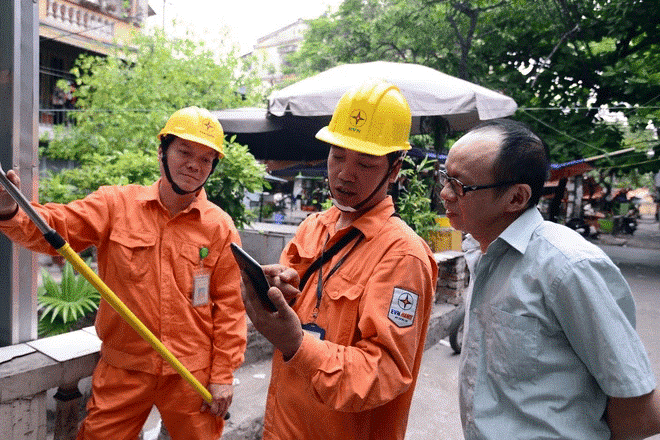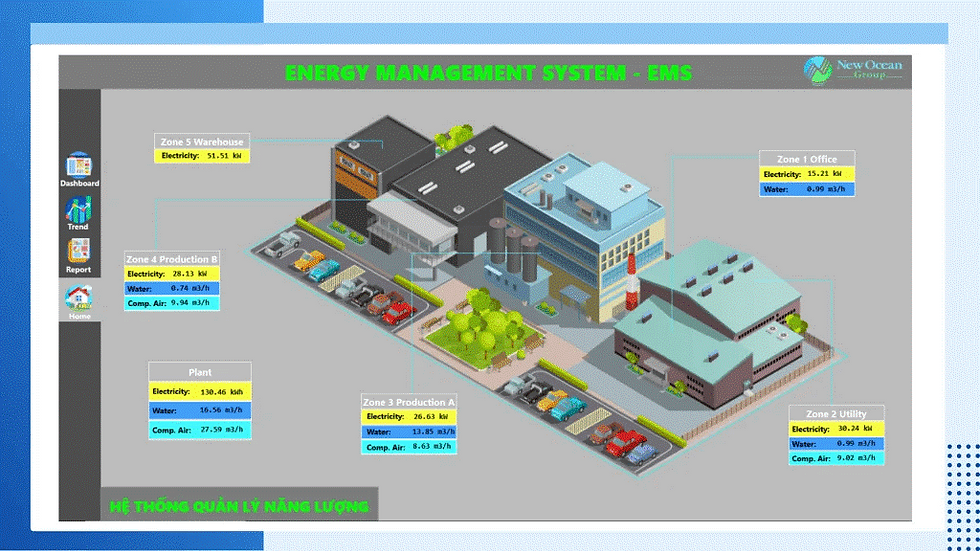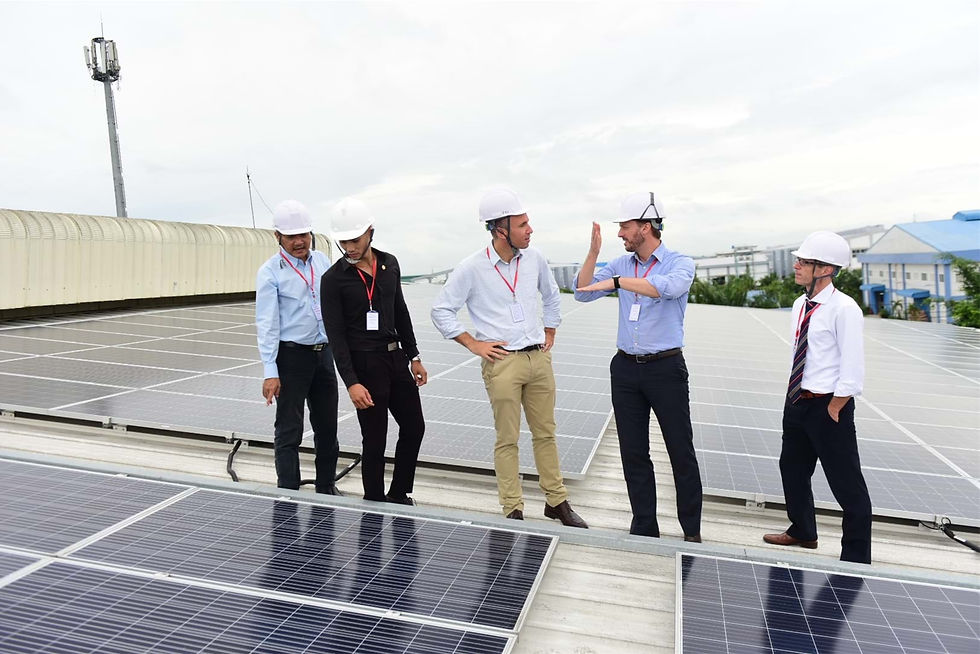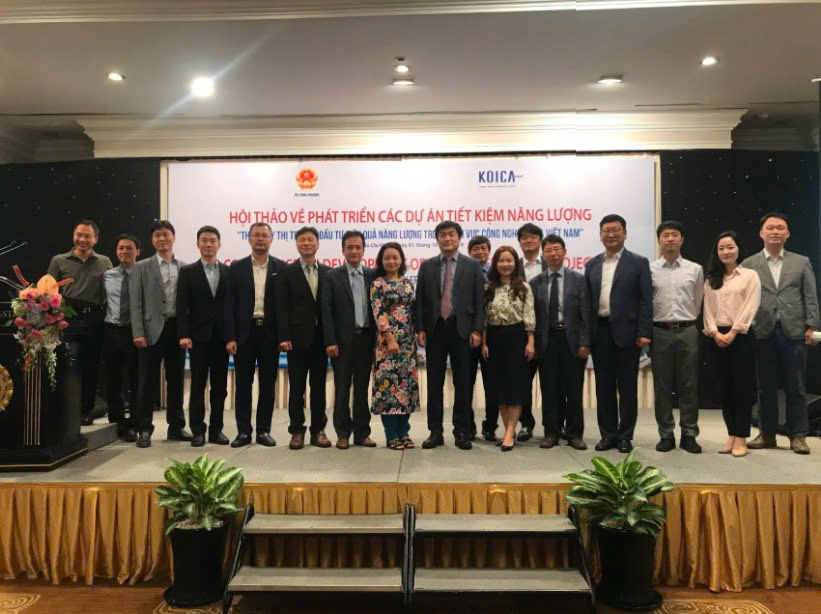Where is your business on the energy maturity ladder?
- marketing69652
- 1 ngày trước
- 5 phút đọc
This month, your company’s electricity bill increased by more than 20% even though production remained the same. No one knows why. There is no data, no one takes responsibility, and it’s unclear which production line is overloaded or which equipment is silently leaking electricity. Every month, tens of millions of VND “disappear” without anyone noticing, until a client requests an ESG report and the company has nothing to provide. If this situation feels familiar, your business is likely at Level 1: Reactive on the energy maturity journey, and is bearing the consequences every day.

According to the Energy Efficiency Maturity Model (EEMM) of the Ministry of Industry and Trade, there are five development levels: Reactive, Compliant, Managed, Optimized, and Integrated. This is not just a theoretical framework, but a practical map that helps businesses identify where they stand and what actions they need to take to save costs, reduce emissions, and be ready to meet ESG requirements.
Level 1: Reactive
According to the EEMM theory, this is the lowest level in the energy maturity process, where a business only pays attention to energy when a problem occurs or when it is required to do so.

A simulated example is a plastic factory that cannot control its electricity bills due to a lack of data. A business cannot save energy if it does not know where consumption is occurring. This stage is characterized by passivity and a tendency to react only after problems arise.
As legal regulations tighten and pressure for transparency from ESG reports required by clients or international partners increases, businesses can no longer delay and are forced to transform, gradually moving to the next level in the energy maturity journey.
Level 2: Compliant
At this level, businesses have a clearer awareness of the role of energy in operations. However, actions are often driven by external requirements such as mandatory audits, partner demands, or standards like ISO 50001, rather than arising from internal initiative.
A typical example is Đông Á Steel Joint Stock Company, selected to participate in an energy audit under the project “Promoting the Energy Efficiency and Conservation Investment Market”, implemented by KOICA in collaboration with the Ministry of Industry and Trade. The report showed that the company has the potential to save over 6 million kWh of electricity and 770 tons of steam annually, equivalent to approximately 15 billion VND if the proposed solutions are implemented.

However, according to assessments, for businesses in Vietnam to realize their energy-saving potential, solutions must involve investing in modern technological equipment, changing production processes, and training operational personnel - these are factors that make implementation quite challenging.
Simply acting to meet external requirements may help businesses “pass the test” in the short term, but to survive and develop sustainably, they need to adopt a proactive approach, managing energy as a strategic resource rather than merely a cost.
Level 3: Managed
This is the level where businesses begin to proactively manage energy by establishing measurement systems, conducting analysis, and assigning specific responsibilities. According to the EEMM, businesses at this level typically have a dedicated department and start using simple technology to monitor consumption.

A real-world study in Vietnam by the scientific journal DOAJ (2023) showed that a company using an Energy Monitoring System (EMS) for six months saved nearly 192,000 kWh of electricity (~9.6% of annual energy costs), equivalent to almost 20,000 USD, and reduced 139 tons of CO₂. The system paid for itself in just about 14 months. This is compelling evidence that well-managed data can translate into clear financial and environmental benefits, not just paperwork.
Once a business has data from measurement and monitoring systems, it should not stop at mere “recording” but go further - analyzing the data to understand consumption patterns, identify anomalies, forecast trends, and make timely, well-informed operational decisions.
Level 4: Optimized
According to the EEMM, this is the stage where businesses transition to data-driven operations, using advanced technological solutions to optimize energy consumption. The application of IoT, Artificial Intelligence (AI), and Building Management Systems (BMS) allows businesses to make real-time adjustments and improve operational efficiency.

Businesses participating in the 4E Phase II program - the Renewable Energy and Energy Efficiency (4E) Program Phase II by the German International Cooperation (GIZ) - have demonstrated the savings potential from technology integration: IoT enables real-time monitoring, AI analyzes consumption trends, and BMS instantly adjusts equipment. This stage shows that energy is not only monitored but continuously optimized through intelligent systems.
Once systems are optimized through technology and data, businesses should not stop at immediate cost savings but take an important next step: integrating energy efficiency into long-term development strategies, closely linked with finance, ESG, and global competitiveness.
Level 5: Integrated
The final level in the EEMM represents comprehensive maturity: energy efficiency is integrated into development strategy, finance, and ESG. Businesses can leverage savings results as a competitive advantage, for green financing, or to demonstrate environmental capability to global partners.

Businesses in the KOICA - Vietnam ESCO project have demonstrated the highest level of maturity: energy efficiency has become part of their financial strategy. They use savings results to demonstrate ESG capability, access green financing, and plan their Net Zero roadmap. This is the destination that businesses should aim for if they want to enhance global competitiveness.
Next Steps
The energy maturity journey is not a “leap” but a series of continuous steps, from the first manual measurements to an integrated financial-ESG strategy. Each level a business passes through not only helps save costs but also opens opportunities to improve efficiency, reduce emissions, and build sustainable credibility in the eyes of customers and partners.
If delays continue, a business will pay the price through higher operating costs, risk of losing contracts, and being left behind in an increasingly “green” global supply chain. However, if it starts early, even with simple actions at the lowest level, the business lays the foundation for a smarter, more competitive operation, ready for Net Zero.
With a platform like VIoT Energy Efficiency Platform, businesses can gradually move from manual management to optimization using real-time data. This solution enables clear measurement of efficiency from the early stages while creating a foundation to enhance sustainable competitiveness.
#ESG; #LOW_CARBON; #VIoT; #VEEP; #GIAI_PHAP_NANG_LUONG_SACH; #NETZERO; #NANG_LUONG_XANH; #TOA_NHA_XANH; #NHÀ_MAY_XANH; #SMART_INDUSTRIAL_4; #SMART_BUILDING; #FOOT_CARBON; #CARBON_FOOT; #GREENHOUSE_GAS_EXPERT; #CARBON_ROADMAP; #GRI; #SASB; #DJSI; #SAVING; #LIGHTING; #CHILLER; #ENERGY_EFFICIENCY; #AMIGO; #SOLAR; #BEES; #STORAGE; #REAL_TIME; #EeaaS; #LaaS; #EaaS; #SUSTANABILITY; #RENEWABLE; #SMART_LIGHTING; #MANAGEMENT; #OPTIMIZATION; #ENERGY; #EFFICIENCY; #ESG; #LaaS; #EEaaS; #EaaS; #ESaaS
.png)